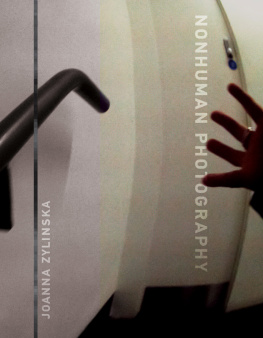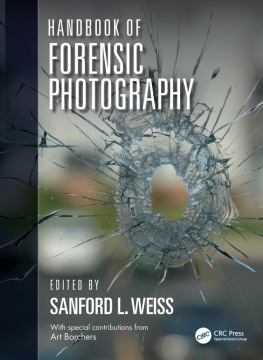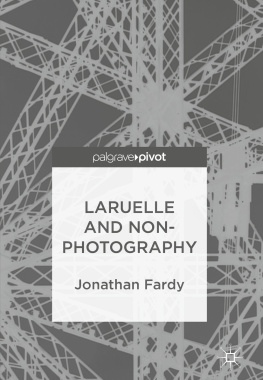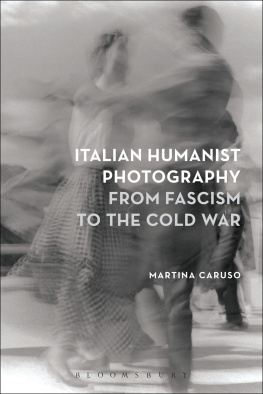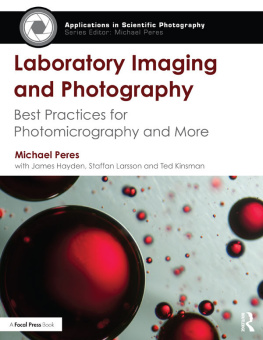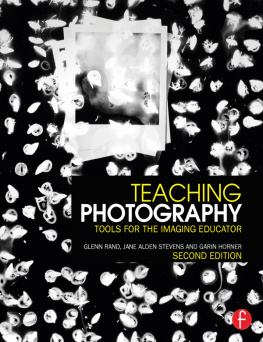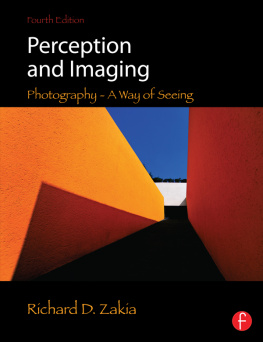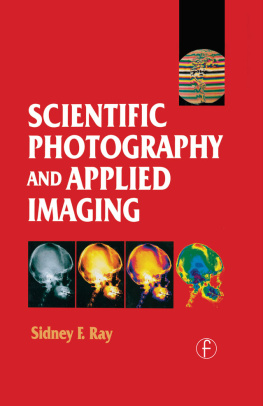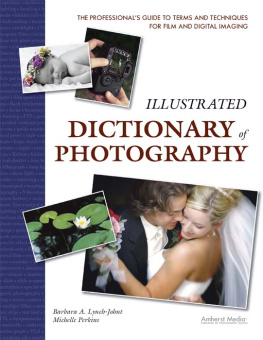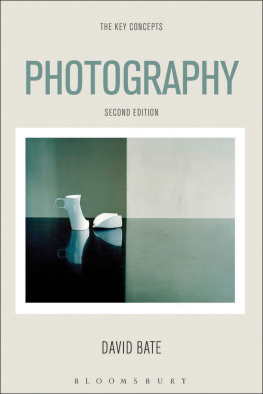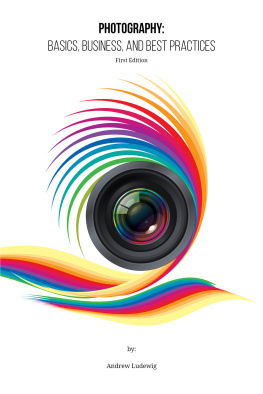Zylinska - Nonhuman Photography
Here you can read online Zylinska - Nonhuman Photography full text of the book (entire story) in english for free. Download pdf and epub, get meaning, cover and reviews about this ebook. City: Cambridge;Mass, year: 2017, publisher: MIT Press, genre: Romance novel. Description of the work, (preface) as well as reviews are available. Best literature library LitArk.com created for fans of good reading and offers a wide selection of genres:
Romance novel
Science fiction
Adventure
Detective
Science
History
Home and family
Prose
Art
Politics
Computer
Non-fiction
Religion
Business
Children
Humor
Choose a favorite category and find really read worthwhile books. Enjoy immersion in the world of imagination, feel the emotions of the characters or learn something new for yourself, make an fascinating discovery.
- Book:Nonhuman Photography
- Author:
- Publisher:MIT Press
- Genre:
- Year:2017
- City:Cambridge;Mass
- Rating:5 / 5
- Favourites:Add to favourites
- Your mark:
- 100
- 1
- 2
- 3
- 4
- 5
Nonhuman Photography: summary, description and annotation
We offer to read an annotation, description, summary or preface (depends on what the author of the book "Nonhuman Photography" wrote himself). If you haven't found the necessary information about the book — write in the comments, we will try to find it.
Nonhuman Photography — read online for free the complete book (whole text) full work
Below is the text of the book, divided by pages. System saving the place of the last page read, allows you to conveniently read the book "Nonhuman Photography" online for free, without having to search again every time where you left off. Put a bookmark, and you can go to the page where you finished reading at any time.
Font size:
Interval:
Bookmark:

Joanna Zylinska
The MIT Press
Cambridge, Massachusetts
London, England
2017 Massachusetts Institute of Technology
All rights reserved. No part of this book may be reproduced in any form by any electronic or mechanical means (including photocopying, recording, or information storage and retrieval) without permission in writing from the publisher.
This book was set in Stone Sans and Stone Serif by Toppan Best-set Premedia Limited. Printed and bound in the United States of America.
Library of Congress Cataloging-in-Publication Data
Names: Zylinska, Joanna, 1971- author.
Title: Nonhuman photography / Joanna Zylinska.
Description: Cambridge, MA : The MIT Press, [2017] | Includes bibliographical references and index.
Identifiers: LCCN 2017010149 | ISBN 9780262037020 (hardcover : alk. paper)
eISBN 9780262343350
Subjects: LCSH: Photography--Philosophy. | Hidden camera photography. | Electronic surveillance. | Automatic machinery. | Extinction (Biology)
Classification: LCC TR183 .Z95 2017 | DDC 770--dc23 LC record available at https://lccn.loc.gov/2017010149
ePub Version 1.0
The seeds for this book were planted with the inaugural professorial lecture on nonhuman photography that I gave at Goldsmiths, University of London, in March 2014. I am grateful to my Goldsmiths colleagues and students for ongoing support and inspiration, in particular Lisa Blackman, Sean Cubitt, Natalie Fenton, Julian Henriques, and Sarah Kember. Many other institutions and organizations have generously invited me to present material from this project as it unfolded: Aalto University, Centre Culturel International de Cerisy, Coventry University, the Center for 21st Century Studies at the University of WisconsinMilwaukee, Courtauld Institute of Art, European Communication Research and Education Association (ECREA), Institut National dHistoire de lArt (INHA), the International Media Art Biennale WRO 2015, Katholieke Universiteit Leuven (KU Leuven), Kings College London, Lincoln University, Lund University, New York University Abu Dhabi, Onassis Cultural Centre, Polish Academy of Sciences, Princeton University, Universidad de las Amricas Puebla, the Universities of Bergen, Copenhagen, Greenwich, Kent, Minnesota, Oregon, Westminster, and the West of England, and the Winchester School of Art. I received invaluable feedback at all of those places, which helped me improve the manuscript immensely.
I am truly grateful to many individuals who have inspired me and helped me develop the ideas contained in this book. I would especially like to thank Clare Birchall, Dave Boothroyd, Ting Ting Cheng, Theodoros Chiotos, Gabriela Mndez Cota, Alberto Lpez Cuenca, David Cunningham, Ewa Domaska, Mika Elo, Richard Grusin, Kamila Kuc, Max Liljefors, Nina Sellars, Doug Sery, Jonathan Shaw, Stelarc, Frederik Truyen, Ross Varney, Michael Wamposzyc, Bernadette Wegenstein, and Paul Wombell. I am also very grateful for the generosity of many artists whose work has long served as inspiration for me, and who have kindly allowed me to reproduce their images in this book: Bonamy Devas, Vronique Ducharme, Juliet Ferguson, Alexa Horochowski, Pieter Hugo, Tong Lam, Lindsay Seers, and Richard Whitlock. As always, a special thank-you goes to Gary Hall.
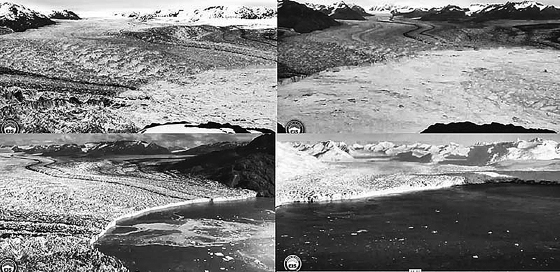
.
At the very beginning of the twenty-first century, a professional photographer with an interest in environmental issues named James Balog decided to record glacier retreat, a phenomenon that is considered the most visible indicator of climate change in the world today ( The project has also served as a driver for the activities of the Earth Vision Institute, a donor-funded organization headed by Balog whose goal is to help global citizens see the impact of environmental change and envisage a better tomorrow.
The above anecdote encapsulates all of the key concerns of Nonhuman Photography. On the one hand, the production process involved in shooting the multiyear collection of images of glaciers from high vantage points in extreme weather conditions signals that today, in the age of CCTV, drone media, medical body scans, and satellite imaging, photography is increasingly decoupled from human agency and human vision. Yet I will also argue throughout the book that even those images that are produced by the human, whether artist or amateur, entail a nonhuman, mechanical element. By this I mean that these images involve the execution of technical and cultural algorithms that shape our image-making devices as well as our viewing practices. On the other hand, the glacier project demonstrates how photography is increasingly mobilized to document and illustrate the precariousness of the human habitat, and also howthrough advertising, campaign posters, and Instagramit is tasked with helping us imagine a better tomorrow and a better life for ourselves. In its conjoined human-nonhuman agency and vision, photography thus functions as both a form of control and a life-shaping force.
All-encompassing in the workings of traffic control cameras, smart phones, and Google Earth, photography can therefore be described as a technology of life: it not only represents life but also shapes and regulates itwhile also documenting or even envisioning its demise. Thanks to the proliferation of digital and portable media as well as broadband connectivity, photography has become pervasive and ubiquitous: we could go so far as to say that our very sense of existence is now shaped by it. In the words of Susan Sontag, To live is to be photographed, to have a record of ones life, and therefore to go on with ones life oblivious, or claiming to be oblivious, to the cameras nonstop attentions. This altered role and agency of the photographic medium calls for a new understanding of photography, I suggest, beyond its traditional humanist frameworks and perceptions. Nonhuman Photography analyzes this new ontologicaland politicalconjuncture, as well as possible ways of negotiating it, while also refusing to submit to the conventional human versus machine narrative. Through this, it outlines a posthumanist philosophy of photography, anchored in the sensibility of what has become known as the nonhuman turn.
There are good reasons why a new conceptual framework for understanding photography as part of a wider media context may be needed. Even though photography has become embedded in our everyday lives on so many different levels, the traditional scholarly and curatorial way of discussing this medium still maintains a relatively narrow set of humanist and human-centric frameworks and discourses on the topic: photography as art or photography as social practice. The first framework is rooted in the methodology of art history, and is encapsulated by numerous histories of photography, typically narrated as stories of the evolution of the medium featuring those rare singular actors identified as artists.
Nonhuman Photography adopts a different, and arguably more complex and more multifaceted, perspective in its treatment of photography: that of posthumanist media theory. By this I mean a media-theoretical framework that combines insights from media, communications, and cultural studies with those of continental philosophy and cultural theory, while also raising questions about the human subject as the anchor and main reference point of analysis. In other words, my book positions photography first and foremost
Next pageFont size:
Interval:
Bookmark:
Similar books «Nonhuman Photography»
Look at similar books to Nonhuman Photography. We have selected literature similar in name and meaning in the hope of providing readers with more options to find new, interesting, not yet read works.
Discussion, reviews of the book Nonhuman Photography and just readers' own opinions. Leave your comments, write what you think about the work, its meaning or the main characters. Specify what exactly you liked and what you didn't like, and why you think so.

